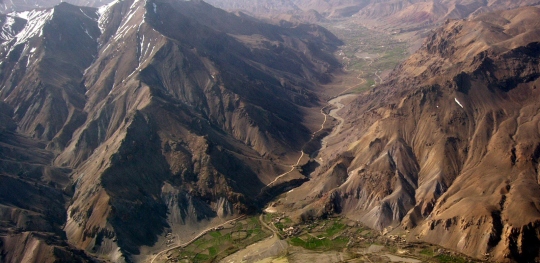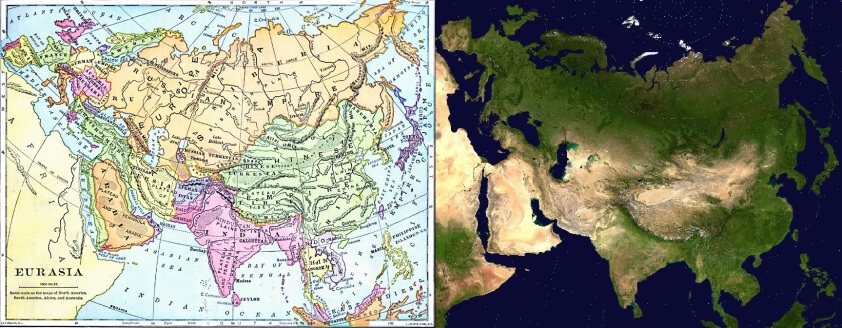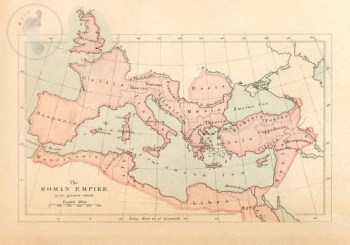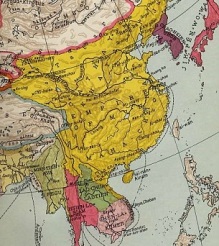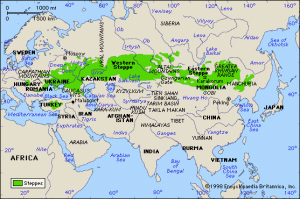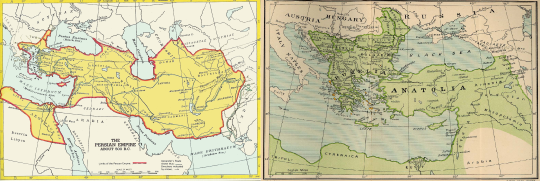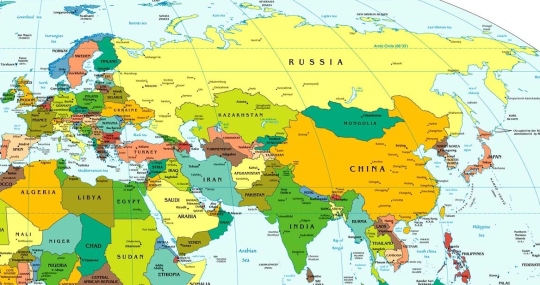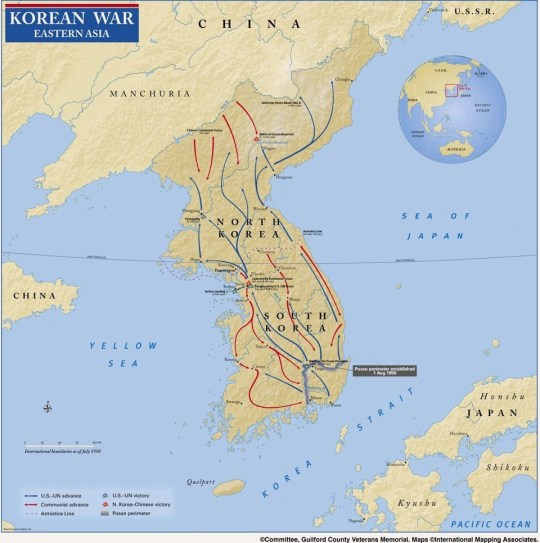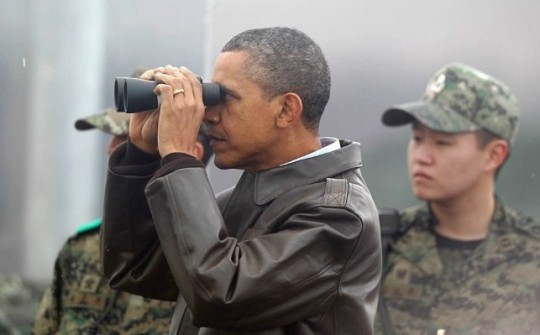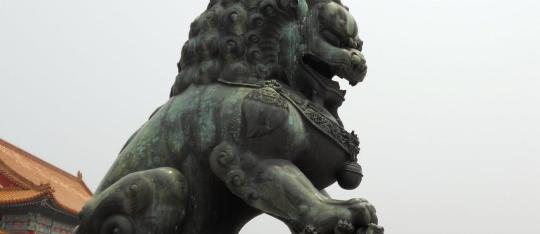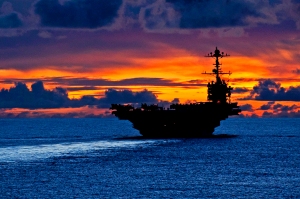Category: Asia
The Geopolitical Realities of Eurasia
Anyone who glances at the Eurasian map and concludes that the countries that make up the continent came about due to the decisions of men or women is sadly mistaken. Although government actions are indeed at times a factor, the overriding force that forms nations, states, and empires in this region is geography. Anyone studying Eurasian politics should be aware of these geopolitical realities.
On Eurasia’s western end (Europe) there exists a collection of countries, while its eastern end is dominated by a single state: China. Eurasia’s northern swathe is controlled exclusively by Russia, while its south is divided amongst a number of countries. These are the realities of the Eurasian map; they do not come about because of mere chance, but are caused by geography. I will examine these realities.
Europe consists of a multitude of states while China consists of one
 Looking at the Eurasian map, does it not appear peculiar that while the West consists of so many states that none dominate the region, the East is clearly dominated by a single state? This phenomenon has existed throughout history. Since 221 BC, China has been a single unified nation. China has occasionally disintegrated during ‘warring states’ periods, but generally a single dynasty has always maintained control of the area. This fact is due to geography. Meanwhile in Europe, no single state has ever dominated the entire continent – at one point Rome may have come close, but this remains the exception. The continent resisted the aspirations of Charlemagne, Napoleon, and Hitler. This fact is again due to geography.
Looking at the Eurasian map, does it not appear peculiar that while the West consists of so many states that none dominate the region, the East is clearly dominated by a single state? This phenomenon has existed throughout history. Since 221 BC, China has been a single unified nation. China has occasionally disintegrated during ‘warring states’ periods, but generally a single dynasty has always maintained control of the area. This fact is due to geography. Meanwhile in Europe, no single state has ever dominated the entire continent – at one point Rome may have come close, but this remains the exception. The continent resisted the aspirations of Charlemagne, Napoleon, and Hitler. This fact is again due to geography.
Europe has a highly indented coastline. It has five large peninsulas, all of which evolved independent people, languages, and subsequent governments. These peninsulas are Norway/Sweden, Denmark, Portugal/Spain, Italy, and Greece. Europe also has two major islands, Britain and Ireland. Europe is further carved up by a series of mountain ranges, the Alps, Pyrenees, Carpathians, and the Norwegian Border Mountains. Finally Europe’s two major rivers, the Rhine and the Danube, serve as borders to further divide the continent. The division of Europe by geography served to develop a multitude of ethnic groups, governments, and states. Such is Europe’s division that its nations have historically been in a state of near-constant war, be it between the Athenians and the Spartans, or between the Prussians, Habsburgs, and Ottomans, or between the British, French, Germans, and Russians. Today Europe’s peoples bicker over economics and are less unified than many would have us believe.
China, on the other hand, has a much smoother coastline. Only the Korean peninsula and the peninsula of South-East Asia are sufficiently separated to allow for the formation of separate nations. China’s two largest islands, Taiwan and Hainan, are each less than half the size of Ireland. Japan is the only island to be large enough to form a separate state. China’s only mountain range (the Himalayas) separates it from India rather than separating its people. China’s heartland is bound together by two long navigable rivers, the Yellow and Yangtze Rivers. North and South China are bound together by a relatively easy connection between these two rivers that was later linked by the Grand Canal. Europe’s two major rivers are much smaller, and connect much less of the continent, and thus do not serve as the unifiers that China’s rivers do. What appears as peculiar at first is really quite simply a result of geography.
The Northern swathe will always be dominated by a single aggressive nation
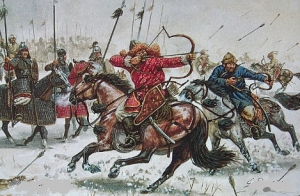 The Russia political elite have historically always believed they must defend Russia from influence and invasion by securing its frontiers. This foreign policy paradigm is traceable to the thirteenth century, when Russia was smashed by the Mongols who rampaged across Eurasia, and was denied access to the European Renaissance. Russia was thus branded with bitter feelings of inferiority and insecurity. To maintain its security, Russia must conquer as much territory as it can. Kaplan argues throughout Russia’s history, it has acted as “a land power that had to keep attacking and exploring in all directions or itself be vanquished.” We see this in the 1800s when Russia pushed into Eastern Europe in an attempt to block France, and again in 1945 when Moscow used Eastern Europe as a buffer-zone against a resurgent Germany. Russia has also pushed into Afghanistan to block the British during the Great Game, and conquered the Far East to block China. These same motives were at play when the Soviets invaded Afghanistan in 1979. Moscow again felt vulnerable when the Soviet Union dissolved and it lost the buffer-zone it gained in 1945. This is why today Putin believes the European Union is a threat, and why the Kremlin attempts to bring Eastern European countries back into its sphere of influence, and why it invaded Georgia in 2008. My article The Wiley Bear – Russian Motives for the Nord Stream Pipeline analyses this phenomenon in relation to pipeline politics.
The Russia political elite have historically always believed they must defend Russia from influence and invasion by securing its frontiers. This foreign policy paradigm is traceable to the thirteenth century, when Russia was smashed by the Mongols who rampaged across Eurasia, and was denied access to the European Renaissance. Russia was thus branded with bitter feelings of inferiority and insecurity. To maintain its security, Russia must conquer as much territory as it can. Kaplan argues throughout Russia’s history, it has acted as “a land power that had to keep attacking and exploring in all directions or itself be vanquished.” We see this in the 1800s when Russia pushed into Eastern Europe in an attempt to block France, and again in 1945 when Moscow used Eastern Europe as a buffer-zone against a resurgent Germany. Russia has also pushed into Afghanistan to block the British during the Great Game, and conquered the Far East to block China. These same motives were at play when the Soviets invaded Afghanistan in 1979. Moscow again felt vulnerable when the Soviet Union dissolved and it lost the buffer-zone it gained in 1945. This is why today Putin believes the European Union is a threat, and why the Kremlin attempts to bring Eastern European countries back into its sphere of influence, and why it invaded Georgia in 2008. My article The Wiley Bear – Russian Motives for the Nord Stream Pipeline analyses this phenomenon in relation to pipeline politics.
Only analysing Russia’s paradigm today ignores the fact that throughout history any nation that controls Eurasia’s North acts in this way. Just as the Mongols devastated medieval Europe, the Huns sacked Rome, and the Scythians raided from the east before that. The Great Wall of China was built to defend against steppe raiders. Each of these nations aggressively secured their frontiers in a similar manner to that of Russia in the last century. This fact is caused entirely by geography. From the Hungarian plain, through Ukraine, the northern Caucasus, and Central Asia to Manchuria of the Far East lays the Central Asian steppe, the world’s vastest grassland. It was called “the great grass road” by Russian scholar W. Bruce Lincoln. Any peoples who reside on this steppe are inevitably insecure, because they have no natural defenses such as mountains or forest. They must conquer or be conquered. After the High Middle Ages, Russia became the single nation to dominate this region, but this region has always been dominated by a single nation, be it the Mongols, the Huns, or the Scythians, and this fact is due to geography.
The Middle East and Southern Asia: again a multitude of states
 Because of geography a single state dominates Eurasia’s north. It is also because of geography that Eurasia’s south is divided. Like in Europe, no single nation has dominated this region. Although the Persian Empire of 500 BC, Alexander the Great, and the Ottoman Empire have each come extremely close, these remain exceptions to the rule.
Because of geography a single state dominates Eurasia’s north. It is also because of geography that Eurasia’s south is divided. Like in Europe, no single nation has dominated this region. Although the Persian Empire of 500 BC, Alexander the Great, and the Ottoman Empire have each come extremely close, these remain exceptions to the rule.
Geography defines the Middle East’s borders. The borders of Iran are defined by the Iranian plateau while the borders of Turkey are defined by the Anatolian land bridge. The Arabian Peninsula is dominated by Saudi Arabia. Yemen exists at this peninsula’s south because this area is characterised by mountains and a network of oases.
India too is defined by geography. It is a peninsula framed by the Arabian Sea on its west, and the Bay of Bengal on its east. The mountainous Burmese jungles separate it from the nations of South-East Asia, while the Himalayas separate it from Tibet. But geography has also left India vulnerable to attack from the northeast. India is bordered by the Persian-Afghan plateau, which consists of a gradual incline rather than a divisive mountain range. India is thus dangerously close to the Central Asian steppe. It is from here that India has faced invading Greeks, Persians, and Mongols. The British Empire felt most vulnerable at this frontier during the Great Game, and it is here that India faces its rival Pakistan today. I outlined this last fact when I argued India is ‘cursed by geography’ in my article The Era of the Eagle – American Hegemony is Here to Stay. But while India is indeed defined by geography, it is also divided by it. India does not have the same unifying rivers that China does. Its multitude of river systems (be it the Ganges, Brahmaputra, Narmada, Tungabhadra, Godavari etc.) only divide the region. Its weak borders mean other nations such as Nepal, Pakistan, and Bangladesh exist on the Indian subcontinent. These non-unifying factors mean historically India has been made up of many polities, and more recently a Hindu-Muslim drama has occurred.
Woks Cited
Diamond, Jared. Guns, Germs, and Steel. New York: W.W. Norton and Company, 1999.
Kaplan, Robert D. The Revenge of Geography. New York: Random House, 2012.
‘Armed and Dangerous’ – China, America, and the North Korean Dilemma
North Korea is a state that has made it clear it does not intend to act according to international standards; it fulfills the definition of ‘rogue state’ perfectly. It also threatens the security of its neighbours. China, North Korea’s only ally, holds the key to resolving this dangerous situation. However China is caught in a precarious position. I argue that China and America can work through the North Korean dilemma together. To do this I present a past example of compromise.
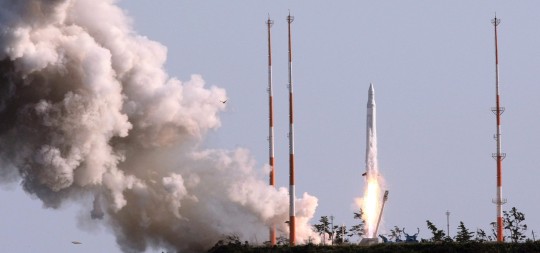 To understand the nature of the Kim dynasty and North Korea’s foreign policy today, one must first understand history. The United States and the Soviet Union divided Korea, a colonial possession of a defeated Japan, in 1945. North Korea fell into the Soviet sphere of influence, while Japan and South Korea would remain allied with the United States. In June of 1950 North Korea invaded South Korea. The world’s Cold War-era balance of power meant a civil war between communist and democratic factions would lead to foreign intervention. A UN sanctioned ‘police action’ meant a US led coalition would act to defend democratic South Korea.
To understand the nature of the Kim dynasty and North Korea’s foreign policy today, one must first understand history. The United States and the Soviet Union divided Korea, a colonial possession of a defeated Japan, in 1945. North Korea fell into the Soviet sphere of influence, while Japan and South Korea would remain allied with the United States. In June of 1950 North Korea invaded South Korea. The world’s Cold War-era balance of power meant a civil war between communist and democratic factions would lead to foreign intervention. A UN sanctioned ‘police action’ meant a US led coalition would act to defend democratic South Korea.
Initial North Korean victories meant United States and South Korean forces were pushed back to the Pusan Perimeter, on the southernmost tip of the peninsula. Meanwhile China acted to secure the Korean border, fearing the potential consequences of an American victory. During the Battle of the Pusan Perimeter, UN forces led by General Douglas MacArthur repelled the Korean People’s Army forces and turned the tide of the war. Subsequent campaigns saw US and South Korean forces push the Korean People’s Army forces past the 38th parallel: the North-South Korean border. When US forces neared the Chinese-Korean border, China intervened. Chinese and North Korean forces would push the United States back to the border area. Negotiations would bring about an armistice however the war would never officially end; the border between North and South Korea remains the world’s most heavily defended. To this day North Korea remains both allied to China and an enemy of South Korea and the United States.
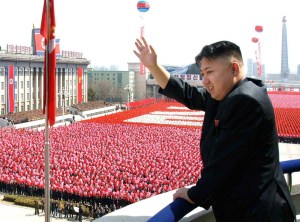 All in the family
All in the family
Kim Il-sung ruled North Korea from 1948 – 1994, his son Kim Jong-il would secede him and his grandson Kim Jong-un embodies the dynastic chain today. The Jong-il and Jong-un governments have made provocative military actions a cornerstone of the regime’s foreign policy. In March of 2010 the North Korean navy is believed to have sunk the South Korean vessel Cheonan with a torpedo. In November North Korea shelled the South Korean border island of Yeonpyeong. North Korea’s 2006 and 2009 nuclear tests lead most to assume the nation possesses limited nuclear capabilities. However nuclear capabilities are not enough to threaten the security of neighbouring state, the Korean People’s army must possess a way of launching a nuclear warhead.
The security threat North Korea’s ‘space program’ presents
Even if North Korea were able to mount a nuclear weapon to one of its existing military rockets (a technology it has yet to master) its nuclear capabilities would only threaten South Korea and Japan. The only North Korean military rocket to have been successfully launched is its Nodong missile, an improved version of the Russian ‘scud’ chain of missiles. This missile’s range is limited, only South Korea, Japan, China, Russia, and Mongolia fall in its potential trajectory. Although China, Russia, and Mongolia all fall within this range, Pyongyang is not likely to attack these states. North Korea is still ‘at war’ with South Korea and the United States.
Although North Korea possesses military rockets with further range, it has yet to successfully test them as tests like these are extremely provocative. However last Wednesday North Korea launched a satellite into space. Not surprisingly mastering this feat and the feat of successfully launching an intercontinental ballistic missile with much further range than a Nodong missile takes transferable technology. After all, both techniques are considered rocket science. Therefore North Korea’s 12 December launch can be seen as a step in the direction of launching a missile at farther targets. The Unha-3 rocket that carried the regime’s satellite into space in effect extends the potential range in which existing Korean missiles reach. With further technological advances North Korea could threaten the United States‘ security, its enemy since 1950.
A call for action
There have been repeated rounds of sanctions and condemnation from the international community, however North Korea’s complete disregard for international peace warrants a stronger response. Should Kim Jong-un become further emboldened, the violence will surely escalate. It is likely Pyongyang will continue to push the limits. Past incidents of North Korean military aggression prove South Korea already faces major security threats. Therefore the time to act on North Korea is now, before the situation deteriorates further.
China’ precarious position
China hopes to gain great-power status in the international state system, but its ally in Pyongyang continues to put the region’s security in jeopardy. By being allied to a state that makes no attempt to abide by international norms China risks its legitimacy and thus its acceptance as a great-power in the region and the international community. Although China has expressed regret over North Korea’s nuclear testing and rocket launches, and the two regimes have often clashed, Beijing has yet to fully abandon its ally. This is because Beijing fears that should it attempt to forcefully influence North Korea, a spurned Kim Jong-un would lash out violently, provoking South Korea and subsequently America. A war against a Chinese ally on the Chinese border in which US forces are involved would be anathema to Beijing, it would mean China was losing influence in its region. A unified Korea would likely be an American ally, and could be used to check China’s rise. Thus China believes its only hope is that the situation remains as it appears today, it hopes for stability on the Korean Peninsula above all else.
The ticking time bomb
Although the above call for action is certainly warranted, the United States will not become involved militarily on the Korean Peninsula today because North Korea is China’s ally and falls in China’s sphere of influence. But should North Korea continue to act violently (a likely development) it could cause a war with America. This seems especially likely when one considers the North Korea’s satellite launch, as previously mentioned this is a step in the direction of endangering US security. The Pentagon constantly stations around 30,000 troops in both South Korea and Japan and as I argued in the Dragon’s Navy – Chinese Capabilities and American Policy, the United States must remain the dominant naval power in the Western Pacific. Therefore assuming the situation continues to grow more dangerous, the United States will eventually become involved. North Korea thus represents a ticking time bomb to Beijing.
The obvious question
What if China were to both act to remove Kim Jong-un from power and seek to maintain a strong relationship with a unified Korea? China already does more trade with South Korea, maybe it is time for China to force the two to unify. Perhaps America could agree Seoul’s new government would remain neutral, and would remove its troops from a unified Korea. China would likely agree to reunification on these terms.
Unfortunately there are many problems with this scenario. First of all, Chinese foreign policy rests on a doctrine of non-intervention. China has thus far not exported an ideology or colonized land, it would be simply hypocritical to start now. Secondly, America would want to ensure China was not simply throwing its weight around, it may act to either counter China’s aggression towards North Korea, or act vengefully after. Thirdly, even if China were to ‘ok’ its actions with Washington, the Pentagon would at the very least insist US Special Forces secured North Korea’s nuclear-program sites. As mentioned above, US forces acting within China’s sphere of influence would be seen as a foreign policy failure to Beijing.
 But what if China and the United States could overcome their differences on North Korea? Perhaps Xi Jinping and Barack Obama could strike a deal wherein a mixture of covert and non-covert actions would see the Kim dynasty removed and Korea unified. There must be a compromise in which a conflict between the two is avoided while both save-face. The deal would have to specify that a unified Korea would remain neutral, and the US would likely have to withdraw its troops. Although 1950 saw war between Cold War rivals China and America, 1962 saw a compromise between the US and the USSR. John F. Kennedy worked out a secret deal with Nikita Khrushchev during the Cuban Missile Crisis. This deal saw both super-powers compromise. The USSR removed its missiles from Cuba while the US promised not to invade Cuba and removed its missiles from Turkey. To retain his image as a ‘cold warrior,’ the second part of Kennedy’s deal was kept secret. I argue the situation today can also be overcome, but China and America must first make some back-room deals similar to those made 50 years ago.
But what if China and the United States could overcome their differences on North Korea? Perhaps Xi Jinping and Barack Obama could strike a deal wherein a mixture of covert and non-covert actions would see the Kim dynasty removed and Korea unified. There must be a compromise in which a conflict between the two is avoided while both save-face. The deal would have to specify that a unified Korea would remain neutral, and the US would likely have to withdraw its troops. Although 1950 saw war between Cold War rivals China and America, 1962 saw a compromise between the US and the USSR. John F. Kennedy worked out a secret deal with Nikita Khrushchev during the Cuban Missile Crisis. This deal saw both super-powers compromise. The USSR removed its missiles from Cuba while the US promised not to invade Cuba and removed its missiles from Turkey. To retain his image as a ‘cold warrior,’ the second part of Kennedy’s deal was kept secret. I argue the situation today can also be overcome, but China and America must first make some back-room deals similar to those made 50 years ago.
Works Cited
“Active Duty Military Personnel Strengths by Regional Area and by Country (309A).” Department of Defense. 31 December 2009.
“Beaming.” The Economist, 15 December 2012.
http://www.economist.com/news/asia/21568386-kim-jong-uns-pyrotechnics- although-alarming-world-are-driven-chiefly-domestic
“Briefing by Defense Secretary Robert Gates and ROK Minister Lee.” America.gov Archive, 17 October 2008.
http://www.america.gov/st/texttrans- english/2008/October/20081020121847eaifas0.7119104.html
Brugion, Dino A. Eyeball to Eyeball. New York: Random House Inc., 1991.
Cha, Victor. “The Sinking of the Cheonan,” CSIS, 22 April 2010. http://csis.org/publication/sinking-cheonan
“Friends like these.” The Economist, 20 June 2011. http://www.economist.com/node/18897395
Kim, Jack and Mayumi Negishi. “North Korea rocket launch raises nuclear stakes.” Reuters, 12 December 2012.
http://www.reuters.com/article/2012/12/12/us-korea-north-rocket- idUSBRE8BB02K20121212
Mutton, Don and David A. Welch. the Cuban Missile Crisis a Concise History. New York: Oxford University Press, 2007.
Perlez, Jane. “Despite Risks, China Stays at North Korea’s Side to Keep U.S. at Bay.” The New York Times, 13 December 2012.
http://www.nytimes.com/2012/12/14/world/asia/china-stays-beside-north-korea-a- buffer-against-the-us.html?_r=0
“Guilford County Veterans Memoral Photo Panels.” Guilford NC Veterans Memorial and International Mapping Associates, 2010. http://www.gcveteransmemorial.org/photo-panels/
Vick, Charles P. “No-Dong-A.” GlobalSecurity.org, 2006.
http://www.globalsecurity.org/wmd/world/dprk/nd-1.htm
Vick, Charles P. “Taep’o-dong 2 (TD-2), NKSL-X-2.” GlobalSecurity.org, 1999.
http://www.globalsecurity.org/wmd/world/dprk/td-2.htm
The Dragon’s Navy – Chinese Capabilities and American Policy
As China’s military capabilities grow, it is inevitable that it will use its new found power to its advantage. To maintain regionally stability the United States must remain the dominant naval power in the Western Pacific. But America must also be willing to act within the rules.
Currently America remains the dominant naval power in the Western Pacific. Should China’s navy gain the upper hand, Beijing could act unilaterally to influence other regional players. Most of the world’s trade is done through shipping, and the economies of many if not all of the countries in the region heavily depend on the Pacific sea-lanes. This leaves China’s neighbors vulnerable to coercive action. Naval dominance would allow China to isolate and possibly annex the island nation of Taiwan. The fact that Japan – one of China’s main rivals in the region – is also surrounded by ocean means it too is vulnerable to Chinese force. Although the nations of South-East Asia are connected to the mainland, this does not negate the vital strategic importance of the South China Sea. If China is allowed to dominate to Western Pacific, it could essentially ‘seal-off’ the region, leaving other nations alone with the dragon.
 The Bad News
The Bad News
Although it will be a long time until China can rival the American military’s global dominance, it is very possible that China could rival US power in the Western Pacific in the not-to-distant future. The first piece of bad news is that the People’s Liberation Army (PLA) is currently developing a navy that can do just that. The Pentagon has recognized China now possesses “the most active land-based ballistic and cruise missile program in the world.” The PLA is currently developing the world’s first anti-ship ballistic missile. China’s submarine fleet is also enjoying a major modernizing overhaul. Furthermore the PLA is actively developing new technologies such as anti-satellite and cyber-war capabilities. In 2007 China made a spectacle of shooting down its own broken weather satellite. In the event of a Chinese-American conflict, these new capabilities could be used to attack American naval intelligence and communication, meaning America would have to ‘fight-blind.’ Essentially China is developing what military jargon calls A2/AD (anti-access/area denial) capabilities, meaning the PLA could threaten US aircraft carrier groups and/or bases in Okinawa, South Korea, or even Guam. The end goal for China would be to deny the American navy access to the strategically-important Western Pacific region.
The second piece of bad news comes from history. Henry Kissinger has pointed out that neither Washington nor Beijing has had much experience dealing with equals in a peaceful manner. Chinese nationalism adds a degree of uncertainty to the situation. The Chinese administration, and more importantly its people have a very real sense of past greatness, recent humiliation, and future opportunity. The fifteenth century Ming Dynasty was truly a global power in its time. However, at the beginning of the 20th century, China was essentially a massive failed-state. It has a memory of being ‘carved-up’ by imperial actors, and now craves the respect and power it believe it deserves.

China’s ‘recent-humiliation’ – a 1901 British political cartoon depicts China as a dragon being ‘carved up’ by the imperial powers in the wake of the Boxer Rebellion
Kaplan uses examples of Chinese naval vessels provocatively harassing American ships to argue China is not yet a great power, but still a rising and immature power, “obsessed with the territorial humiliations it suffered in the nineteenth and twentieth centuries.” If China continues to act in this way a small confrontation can explode into a war simply because of Chinese nationalism. Taiwan is an example of how Chinese nationalism can present a problem. Where Washington believes it is protecting a semi-sovereign democracy, Beijing may believe America could be using the situation as an excuse to keep China’s power in check. Chinese nationalists may see this American policy as unfair, adding to a sense of entitlement to the situation. Essentially Chinese nationalism means China may assert its dominance in the region because it believes it deserves dominance. Thus, a small confrontation could lead to larger conflict, perhaps even war. It is not hard to draw a parallel from current US/China relations to pre-1914 British/German ones. Both modern China and 1914 Germany have nationalistic elements, and are/were attempting to assert power globally by developing a navy. Both the modern US and 1914 Britain feel/felt threatened by this assertion of power.
A critic of this argument could point to the inter-connectivity of the global economy – conflict would be a self-inflicted blow to ones own economic potential. Enter the final piece of bad news. In the anarchic realm of inter-state geopolitics, a state will not gain something without actively seeking it. Beijing and Robert Kagan, a foreign policy analyst, states: “Power changes nations . . . It expands their wants and desires, increases their sense of entitlement, their need for deference and respect. It also makes them more ambitious. It lessons their tolerance to obstacles, their willingness to take no for an answer.” Tokyo’s recent spat over the Senkaku/Diaoyu islands does not lend well to the theory that if left unchecked China would not exploit its advantages. Again the 1914 British/German example adds pessimism. Germany was Britain’s second largest export market, and Britain was Germany’s largest before the declared war on one another. Therefore there is no guarantee that China won’t sacrifice temporary economic growth for everlasting geopolitical gains.
The Good News
The good news is that the modern international state system is much different than the one that existed in 1914. Indeed today there exists a multitude of forums that allow for diplomacy rather than war. Organisations like the UN, the G20, the Nuclear Non-Proliferation Treaty, and the WTO can facilitate a rising China. Another main war-deterrent is the fact that both sides have nuclear weapons.
American Policy Going Forward
American policy must do three things to accommodate the emergence of China as a great power. First of all, American must maintain its presence in the Western Pacific. China would be invited to act unilaterally and aggressively in the region should the American navy ever avoid the Western Pacific to avoid the risk of a Chinese assault. The Western Pacific sea lanes exist in international waters after all, and are vital to regional stability. Furthermore the Pentagon must address China’s new A2/AD capabilities by must investing in cyber-defense and advanced anti-ballistics. This would send a signal to China’s neighbors that Washington is there to counter the Chinese threat. Allowing China’s navy to act alone in the region would set a dangerous precedent. The hawks in Beijing could argue militarism worked in China’s favor and would push for more aggressive techniques. Speaking at the July 2010 ASEAN conference, Hilary Clinton guaranteed American intervention should China threaten safe passage for shipping. Actions like these must continue.
While America must counter China on the one hand, it must act within the confines of existing international law on the other. By breaking international law America send the message that great powers are allowed to ignore the rules. As China rises and becomes a great power it too will act in this way. Barack Obama’s The Audacity of Hope echoes this fact – “[w]hen the world’s sole superpower willingly restrains its power and abides by internationally agreed-upon standards of conduct, it sends a message that these rules are worth following.” However this policy must not end four years from now, it must become a central pillar of American foreign policy for several decades to accommodate China’s rise.
Thirdly, Washington and Beijing must hold talks disusing how each state will react should a crisis arise in the region. How should each react should Taiwan declare independence, or should a revolution occur in North Korea? Discussing potential policy would prevent each government from overreacting, and thus prevent unnecessary conflict. In 1914 the mere assassination of an Archduke triggered the most devastating war the world had yet seen; carefully planned actions by both sides throughout China’s rise will prove the pre-1914 analogy wrong.
Works Cited
“Could Asia really go to war over these?” The Economist vol. 404 no. 8803, 22 – 28 2012.
“The Dragon’s New Teeth.” The Economist vol. 403 no. 8779, 7 – 13 April 2012.
Friedber, Aaron L. “Busking Beijing.” Foreign Affairs vol. 91 no. 5, September/October 2012.
“Friend or Foe? A special report on China’s place in the world.” The Economist vol. 397 no. 8711, 4 December 2010.
Kaplan, Robert D. The Revenge of Geography. New York: Random House, 2012.
Nathan, Andrew J. and Andrew Scobell. “How China Sees America” Foreign Affairs vol. 91 no. 5, September/October 2012.
Obama, Barack. The Audacity of Hope. New York: Random House Inc., 2006.

